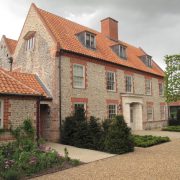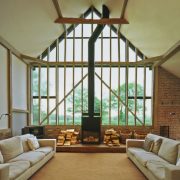Planning permission in a conservation area
Undertaking a home building, extension or renovation project will have significant implications for your project from a planning perspective. This subject is particularly relevant in London and historic cities such as Bath, Oxford, Durham etc, where conservation areas are widespread.
Am I in a conservation area?
You’ll need to begin by doing a conservation area search on your local planning authority’s website. This can be found via the government website: https://www.gov.uk/find-local-council
Your local council’s website should have a search bar where you can type in ‘conservation areas’ to see a map of your area.
Planning permission in a conservation area
Being in a conservation area means your planning proposal must be more sensitive to the local heritage and historical architecture than normal. That doesn’t mean your new build should be a carbon copy of the Edwardian townhouse next door – a good architect can work with you to create a design that is sympathetic to the area yet contemporary. The local conservation officer may even prefer this.
Before starting the design phase of your project, it’s always worth calling your local planning department to get as much information as possible. They may ask you to pay for pre-application advice. As your application will be under more scrutiny than usual, it can be worthwhile doing that.
Do we have any permitted development rights in a conservation area?
Permitted development rights still exist in conservation areas, although they are reduced. But in some cases, these rights may be removed if there is an Article 4 Direction associated with your conservation area.
An Article 4 Direction is made by the local planning authority to restrict or remove permitted development rights. It doesn’t mean the proposal would be forbidden – just that a planning application and consent will be required.
Do we need conservation area consent?
Conservation area consent is an additional application and is required if you are undertaking demolition works:
- To a building with high volume of more than 115 cubic metres (there are some exceptions)
- To demolish a gate, fence, wall or railing over 2 metres high or over 1 metre high if next to a public open space)
Always check with your local planning office, even if your proposals don’t involve the above.
Finding the right architect
Planning and conservation officers respond well to a high quality design that is detailed and sympathetic to surroundings. That is why finding a great architect is so important to the success of your project.
At NJ Architects, we can help you through the complete process, from planning applications to the finished project. We have also worked on numerous conservation projects.
(SEE MORE: 13 things you can do without planning permission)














Leave a Reply
Want to join the discussion?Feel free to contribute!